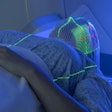Intermediate-risk prostate cancer patients show better outcomes with newer high-dose-rate radiation therapy (RT) procedures compared to patients who received conventional-dose 3D conformal radiation therapy, according to an article published this month in Cancer.
U.S. researchers compared three newer techniques -- high-dose intensity-modulated radiotherapy (IMRT), permanent transperineal brachytherapy, or external-beam radiotherapy combined with a brachytherapy boost -- to conventional-dose 3D conformal radiotherapy. They found that patients treated with the newer techniques had significantly better biochemical control rates after five years.
These results come from a study conducted by a multidisciplinary team of radiation oncologists and urologists at Mayo Clinic Arizona in Scottsdale. The researchers evaluated the five-year outcomes of low, medium, and high-risk prostate cancer patients who received conventional and high-dose radiation therapy treatments. Results were published in the December 1 issue of Cancer (2009, Vol. 115:23, pp. 5596-5606).
The patient cohort included 853 consecutive patients diagnosed with localized prostate cancer who received radiotherapy at Mayo Clinic Arizona between May 1993 and July 2004.
Patients had follow-up examinations every three to six months for the first two years, and once or twice yearly thereafter, with urinary and rectal side effects reported and graded for each examination. The patients were followed from three months to 10 years, with a median follow-up of 58 months.
Principal investigator Dr. William W. Wong, a radiation oncologist and associate professor of oncology, and colleagues retrospectively analyzed treatment outcomes in terms of biochemical control rate, overall survival, local control, and distant control of disease. The authors defined biochemical failure as an increase in prostate-specific antigen (PSA) level of 2 ng/mL or greater PSA level above the nadir with no backdating.
Biological equivalent doses were calculated for each treatment modality to assess the extent of dose escalation from IMRT and brachytherapy compared with conventional dose-conformal radiotherapy treatments.
Some of the patients in each group had received adjuvant hormonal treatment. A separate analysis was performed excluding these patients to eliminate any confounding effects, according to Wong. However, the results of this analysis were comparable to the findings for the entire group.
Comparison of toxicities
The researchers reported that there was no increase in gastrointestinal toxicity from high-dose IMRT compared with conventional-dose 3D conformal radiotherapy. Patients who underwent IMRT therapy had 10% more grade 2 acute toxicities (49% compared to 39%) and 11% more late grade 2 toxicities (27% compared to 16%), however.
Brachytherapy treatment caused more genitourinary toxicity but less gastrointestinal toxicity. Patients who underwent either the combination of external-beam radiotherapy and a brachytherapy boost or brachytherapy alone had more grade 2 and 3 acute and late genitourinary toxicity than patients who received IMRT or conventional-dose conformal radiotherapy.
Treatment that included brachytherapy caused significantly more grade 2 and 3 late genitourinary toxicities. Five percent of the patients who received either conventional-dose conformal radiotherapy or high-dose IMRT radiotherapy experienced grade 3 late toxicities, compared to 18% of the patients who had brachytherapy as a primary treatment or as a boost.
Because of these findings, the authors recommend that patients for whom brachytherapy treatment is recommended who have significant obstructive urinary symptoms be advised of the increased risk of urinary side effects.
Outcomes
The patient cohort's overall survival five years after treatment was 97%.
High-risk patients (12.8% of the total cohort) had a biochemical control rate of 64%; intermediate-risk patients (representing 40.2% of the total) had 82%, and low-risk patients (representing 47% of the total) had 92%. When stratified by type of treatment, there was no difference among low-risk patients, but high-dose treatments produced significantly better control for both intermediate- and high-risk patients.
|
Biochemical control rate
|
High-dose treatment also made a difference with respect to clinically palpable disease recurrence. Patients who received conventional radiation treatments had a 7% local failure rate, compared to 1% for high-dose IMRT and no failure for brachytherapy-related treatments. Distant control rates ranged from 96% for patients who received conventional-dose treatments to 99% for patients who received high-dose IMRT.
By Cynthia E. Keen
AuntMinnie.com staff writer
December 14, 2009
Related Reading
Higher urethral dose means more toxicity when treating prostate cancer, September 1, 2009
Copyright © 2009 AuntMinnie.com


















